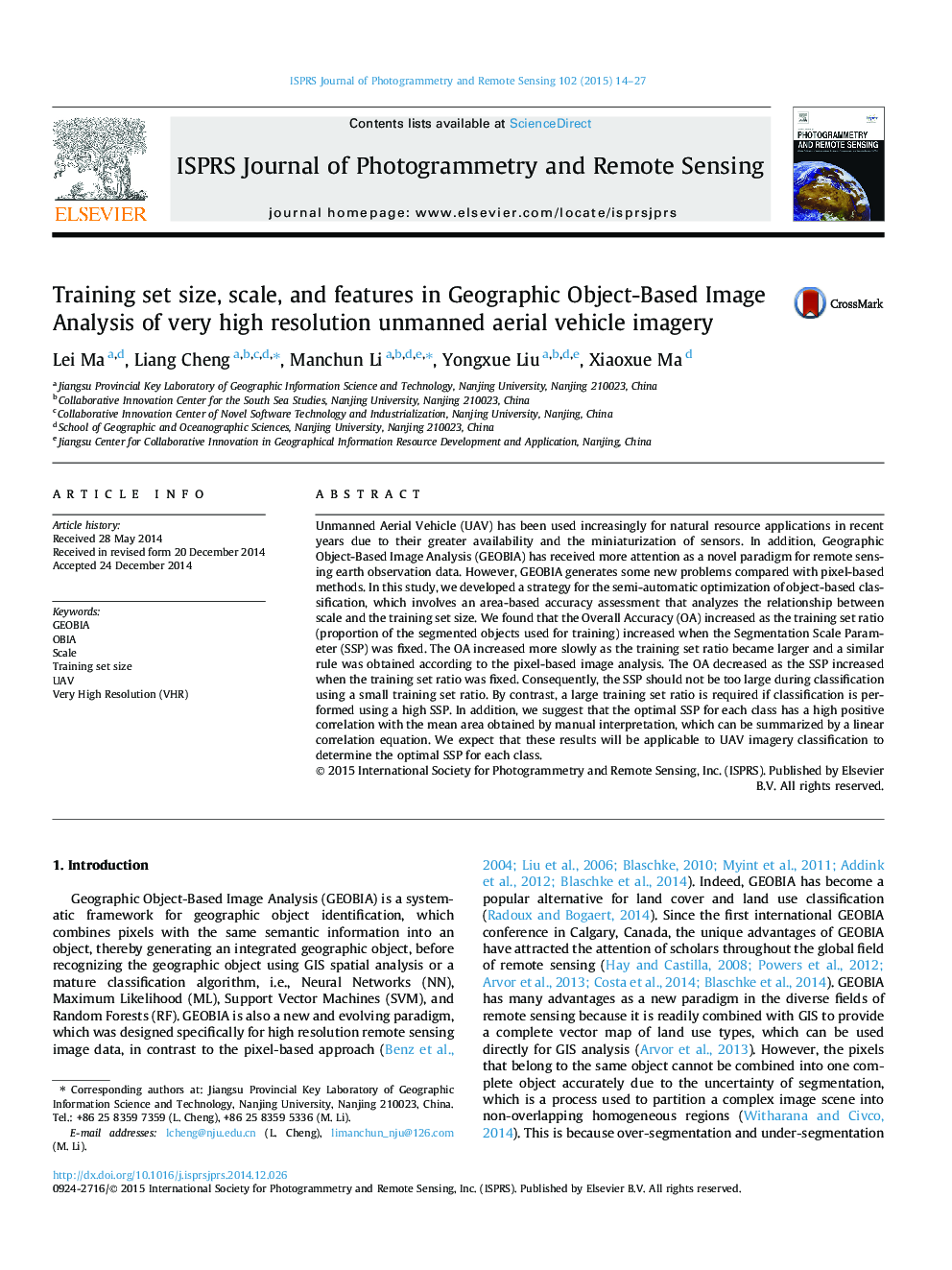| Article ID | Journal | Published Year | Pages | File Type |
|---|---|---|---|---|
| 6949459 | ISPRS Journal of Photogrammetry and Remote Sensing | 2015 | 14 Pages |
Abstract
Unmanned Aerial Vehicle (UAV) has been used increasingly for natural resource applications in recent years due to their greater availability and the miniaturization of sensors. In addition, Geographic Object-Based Image Analysis (GEOBIA) has received more attention as a novel paradigm for remote sensing earth observation data. However, GEOBIA generates some new problems compared with pixel-based methods. In this study, we developed a strategy for the semi-automatic optimization of object-based classification, which involves an area-based accuracy assessment that analyzes the relationship between scale and the training set size. We found that the Overall Accuracy (OA) increased as the training set ratio (proportion of the segmented objects used for training) increased when the Segmentation Scale Parameter (SSP) was fixed. The OA increased more slowly as the training set ratio became larger and a similar rule was obtained according to the pixel-based image analysis. The OA decreased as the SSP increased when the training set ratio was fixed. Consequently, the SSP should not be too large during classification using a small training set ratio. By contrast, a large training set ratio is required if classification is performed using a high SSP. In addition, we suggest that the optimal SSP for each class has a high positive correlation with the mean area obtained by manual interpretation, which can be summarized by a linear correlation equation. We expect that these results will be applicable to UAV imagery classification to determine the optimal SSP for each class.
Keywords
Related Topics
Physical Sciences and Engineering
Computer Science
Information Systems
Authors
Lei Ma, Liang Cheng, Manchun Li, Yongxue Liu, Xiaoxue Ma,
